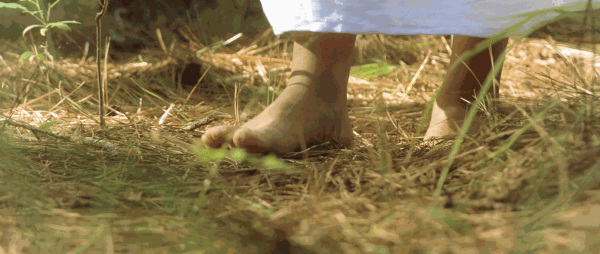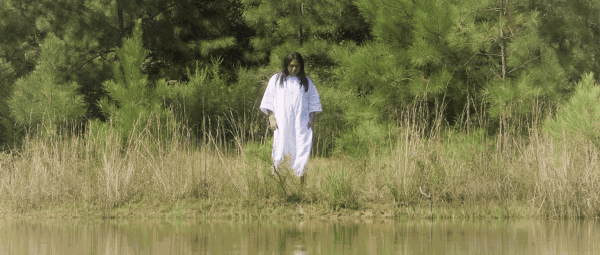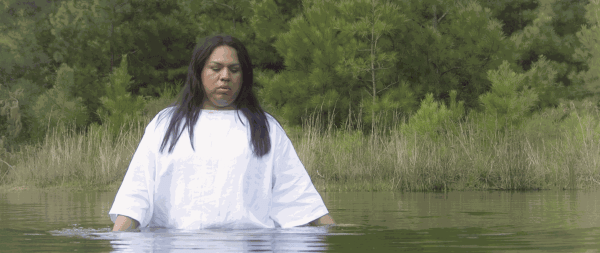Jeffrey Gibson in Land Back: Galerie d’art Stewart Hall, Centre culturel de Pointe-Claire
"As a cornerstone of this exhibition, Jeffrey Gibson presents his video I Was Here (2018), a return to the land as imagined as literal – a deep rootedness in the land and the nurturing earth."
Since time immemorial, indigenous peoples have protected biodiversity in the face of continued human population growth. Since contact with settlers, indigenous communities have been stripped of their ancestral lands; the Land Back movement aims to restore governance and stewardship of the land for a sustainable future.
If Land Back is a call to action, a return of equity to a stolen territory, it is also an opening to some questioning. How can we best protect our biodiversity, our land and our water? The first step would be to return the land to its traditional and legitimate protectors. Returning to indigenous knowledge goes beyond symbolic gestures of recognition or inclusion to significantly change practices and structures.
The Land Back movement is not only about land ownership, it is also about reclaiming a culture and an education that has long been repressed, suppressed and silenced. Many Indigenous skills and knowledge, usually passed down from generation to generation, have unfortunately been lost or forgotten over time. An important part of Indigenous cultures is the connection to nature and the cohabitation with the elements. This applies as much to the symbolism of the natural elements as it does to the ways in which their resources can be used, for agriculture and medicine for example.
Some of the artists presented reappropriate ancestral techniques as an act of perpetuation, homage or resistance. Carrie Alllison uses beadwork to represent medicinal flowers indigenous to northwestern Alberta. Erin Gingrich uses sculpture to represent key elements of her community’s subsistence practices such as fishing and cranberry picking. While Christi Belcourt is inspired by floral motifs and Métis beadwork renderings in her work, replacing the roundness of the beads with paint dots made with a needle head.
As a cornerstone of this exhibition, Jeffrey Gibson presents his video I Was Here (2018), a return to the land as imagined as literal – a deep rootedness in the land and the nurturing earth. Marking the ground with an anonymous scar, it is through performative gesture that Julia Rose Sutherland has invested the exterior of this gallery; a hole in the landscape as a place of opening.
This fraction of the Biennial is placed as an ode to the privileged link that unites indigenous peoples to this land and to its protection.
The Contemporary Native Art Biennial would like to acknowledge that BACA is located on unceded Indigenous lands. The Kanien’kehá:ka Nation is recognized as the custodians of the lands and waters on which we gather today. Tiohtiá:ke commonly known as Montreal is historically known as a gathering place for many First Nations. Today, it is home to a diverse population of Indigenous and other peoples. The Contemporary Native Art Biennial respects the continued connections with the past, present, and future in their ongoing relationships with Indigenous and other peoples within the Montreal community.
Land Back is curated by Michael Patten and features Carrie Allison, Christi Belcourt, Jeffrey Gibson, Erin Gingrich, Faye Heavyshield, Sky Hopinka, Julia Rose Sutherland, Charlene Vickers ,and Olivia Whetung. The exhibition will be on view at Galerie d’art Stewart Hall
in Centre culturel de Pointe-Claire in Pointe-Claire, QC from May 7 to June 26.





